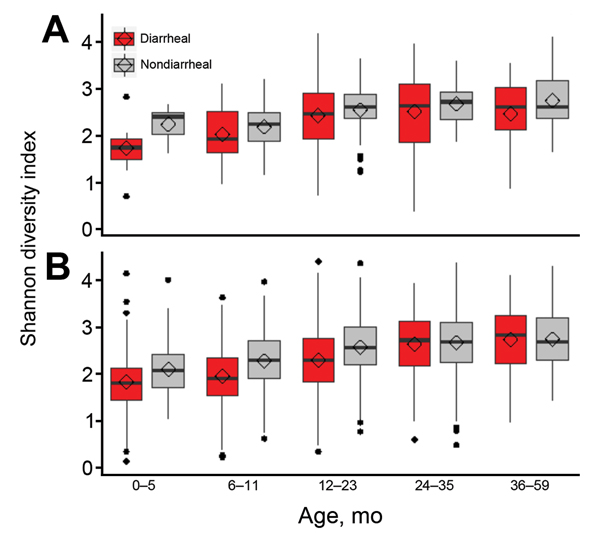Volume 21, Number 2—February 2015
Research
Microbiota That Affect Risk for Shigellosis in Children in Low-Income Countries
Figure 4

Figure 4. Shannon diversity index for diarrheal and nondiarrheal samples with high (A) and low (B) levels of Shigella spp. ipaH gene stratified by age group for children in low-income countries. Box and whisker plot indicates distribution of diversity index for each group. The upper whisker extends from the 75th percentile to the highest value that is ≤1.5× the interquartile range (IQR) of the hinge (upper end) or the distance between the first and third quartiles. The lower whisker extends from the hinge (lower end) to the lowest values 1.5× the IQR of the hinge. Diamonds indicate means and horizontal lines indicate medians. Points outside the ends of the whiskers are outliers beyond 1.5× the IQR of the hinge.
Page created: January 20, 2015
Page updated: January 20, 2015
Page reviewed: January 20, 2015
The conclusions, findings, and opinions expressed by authors contributing to this journal do not necessarily reflect the official position of the U.S. Department of Health and Human Services, the Public Health Service, the Centers for Disease Control and Prevention, or the authors' affiliated institutions. Use of trade names is for identification only and does not imply endorsement by any of the groups named above.